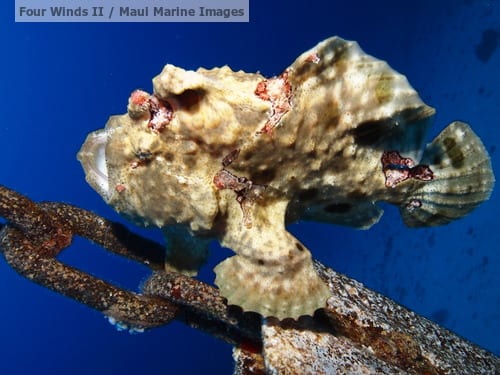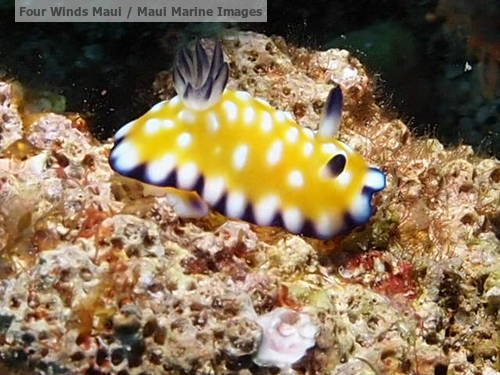Oddities of the Sea
Frogfish
 When you join us for a snorkel tour to Molokini crater, Coral Gardens or elsewhere on either the Maui Magic or the Four Winds II, you never know what you might encounter! This very rare shot of a Frogfish was quite a “catch”!
When you join us for a snorkel tour to Molokini crater, Coral Gardens or elsewhere on either the Maui Magic or the Four Winds II, you never know what you might encounter! This very rare shot of a Frogfish was quite a “catch”!
Frogfish are full of surprises, from their adaptive colors, shapes and elasticity, to their hunting ability and mobility. Considered “ambush predators” of the ocean, there are over 45 species differing vastly in appearance.
Unlike other fish, the Frogfish doesn’t really swim, rather, they walk with developed leg-like fins and webbed feet. They are able to propel themselves through the oceans by forcing water out through their gill holes, just under or behind their pectoral fins.
Frogfish are so well camouflaged and adapted to their immediate surroundings, that they are rarely detected and generally do not move very much, preferring to lie on the sea floor and wait for prey to approach. They’re also sometimes seen perched or hanging from corals and sponges, underwater pilings, mooring weights, rope or discarded debris at various angles while they wait for their meals to arrive. Who would’ve thought you could get delivery on the ocean floor?
Nudibranch
A nudibranch is a type of sea slug and a member of “Nudibranchia”, a group of soft-bodied, marine gastropod mollusks which shed their shell after their larval stage. They are noted for their extraordinary colors and striking forms with over 3,000 known species in existence and new species still being discovered.
Nudibranchs can be found in seas worldwide, including both the tropics and Antarctica and live in virtually all depths of salt water, including the inter-tidal zone to depths of well over 2,000 feet, with the greatest diversity seen in warm, shallow reefs.
Nudibranchs move on a flat, broad muscle called a foot, which leaves a slimy trail. They are usually found on the ocean floor, but some can swim short distances in the water column by flexing their muscles.
They range in size from a few millimeters to a foot long, and can weigh up to about 3 pounds and are endowed with such fantastic coloration and color patterns, they deserve to be called gems of the sea!
